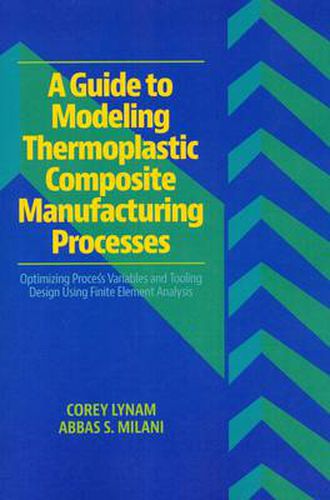Readings Newsletter
Become a Readings Member to make your shopping experience even easier.
Sign in or sign up for free!
You’re not far away from qualifying for FREE standard shipping within Australia
You’ve qualified for FREE standard shipping within Australia
The cart is loading…






This book explains methods and coding to create FEM-based models to optimize process variables and predict dimensional distortions during the manufacture of thermoplastic matrix composite parts. After investigating defects, such as spring-in, caused by thermal inconsistencies during manufacture, the text offers a step-by-step approach to simulating and predicting the magnitude of distortion via readily available FE codes. Models are validated by testing using the example of a multi-staged roll-formed continuous thermoplastic woven laminate, which can be readily extended to a variety of mold geometries. Information in this book is intended to reduce the need for costly and time-consuming re-tooling in thermoplastic parts design. It includes models and experiments for faster, less expensive manufacture of thermoplastic parts. It is focused on simulating thermal defects in thermoplastics. It covers: techniques for better molds, tooling and equipment; Material Property Testing; Thermoplastic Matrix Composite Manufacturing Methods; and, Process Characterization of Roll Forming.It looks at: Case Study Modeling Approaches and Results; Using Elastic Mechanical Properties; Using Viscoelastic Mechanical Properties; and, Pseudo Meso-Level Decomposition.
$9.00 standard shipping within Australia
FREE standard shipping within Australia for orders over $100.00
Express & International shipping calculated at checkout
This book explains methods and coding to create FEM-based models to optimize process variables and predict dimensional distortions during the manufacture of thermoplastic matrix composite parts. After investigating defects, such as spring-in, caused by thermal inconsistencies during manufacture, the text offers a step-by-step approach to simulating and predicting the magnitude of distortion via readily available FE codes. Models are validated by testing using the example of a multi-staged roll-formed continuous thermoplastic woven laminate, which can be readily extended to a variety of mold geometries. Information in this book is intended to reduce the need for costly and time-consuming re-tooling in thermoplastic parts design. It includes models and experiments for faster, less expensive manufacture of thermoplastic parts. It is focused on simulating thermal defects in thermoplastics. It covers: techniques for better molds, tooling and equipment; Material Property Testing; Thermoplastic Matrix Composite Manufacturing Methods; and, Process Characterization of Roll Forming.It looks at: Case Study Modeling Approaches and Results; Using Elastic Mechanical Properties; Using Viscoelastic Mechanical Properties; and, Pseudo Meso-Level Decomposition.